Reviews
Stanley Kubrick
UK/USA, 1999
Credits
Review by Leo Goldsmith
Posted on 14 March 2010
Source Warner Bros. DVD
External links
youreyeswideshut.com, a visual essay on the film’s symbolism
Categories Kubrick
… from behind the masks large eyes as unfathomable as riddles sparkled at him, transformed his indescribably strong urge to watch into an almost intolerable torment of desire.
—Arthur Schnitzler, Traumnovelle (J.M.Q. Davies, tr.)
How do I look?
—Alice in Eyes Wide Shut
In movies as in life, much of what we see is determined by what we have seen and what we wish to see. This is an old chestnut of cognitive scientists and visual psychologists: we recognize and comprehend things by recalling the coded clues of color, shape, size, texture, context, and relative proximity we have learned from our entire history of looking. But as cognitive scientists and visual psychologists also love to point out, we are very often wrong about what we see. The presumptions our brain makes in recognizing things are based largely on what we think we’re seeing - what we already have seen and expect to see again - rather than what we are actually looking at.
In films, this process of anticipation and understanding is complicated by still more factors: how and where we see a film, who made it and who’s in it, what we expect it to be about, the color, medium, and typography of that film’s ad campaign. Just four months after Stanley Kubrick’s very sudden death, Eyes Wide Shut entered American movie theaters in the middle of 1999’s summer blockbuster season - alongside Wild, Wild West, Disney’s Tarzan, Star Wars, Episode 1: The Phantom Menace, and, most intriguingly, The Blair Witch Project - with posters and trailers boasting a formidable trio of mononyms (“CRUISE,” “KIDMAN,” “KUBRICK”) and images of its hugely famous stars naked and making love. To this alluring marketing scheme, add a bit of juicy gossip and “buzz” about a typically lengthy and trying production, pornographic scenes involving the two lead actors, Tom Cruise performing in gay sex scenes, Harvey Keitel being fired from the film (and replaced by Sidney Pollack) for ejaculating into Nicole Kidman’s hair, and even a conspiracy of Scientologists, Illuminati, or worse orchestrating Kubrick’s death as retaliation for the film.
With all this in mind, those who approached Eyes Wide Shut expecting a lurid spectacle were soon disappointed by what they found. Expecting Kubrick to do for the erotic thriller what he had already done for science fiction, the war film, the period piece, and the horror movie, spectators were instead greeted with a film of no determinate genre (is it a satirical comedy? a bedroom farce? a noir/thriller?). Maddeningly deliberate in its pace, and adapted (sometimes verbatim) from a largely unknown 1926 Viennese novel, the film struck many as outdated in its sexual mores, questionable in the authenticity of its authorship, and even socially conservative in its message, its sexiest scene involving the rare sight of a married couple having sex.
This general disappointment was hardly surprising - Eyes Wide Shut is an epic of disappointment - but it’s nonetheless curious for a film that so persistently asks its spectators to look at things, to pay attention to each gesture, each phrase, no matter how seemingly insignificant. If this weren’t already apparent from the title, the first images should serve as a hint (or a warning): the credits blink on and off with images of Kidman in various states of undress as she talks idly with Cruise about things to look at or for (her hair, his wallet). This is, one might argue, what the audience has paid to see and what they’ve always wanted to see: the then-most famous couple in the world, at home in both the literal and figurative sense, unguarded and au naturel.
Kubrick shrewdly draws the audience in with this seemingly innocuous montage of Cruise and Kidman as Bill and Alice Harford, a normal couple at home doing normal things. He then follows this quickly with a diverse succession of scenes that show their more public faces, the performances they enact outside of the home: exchanging pleasantries with the Zieglers, dancing at the party, Bill’s joking and backslapping with an old school chum, even a bit of flirting. And soon, we start to understand how dull these people can be. Even in a seemingly magical setting, with a wall of shimmering Christmas lights that cascade down a stairwell, they perform the ritual of socializing in an automatic, perfunctory manner. The pleasantries are flat and repetitive, the jokes are corny, the reminiscing is awkward, and even the flirting is rote and clichéed.
Much later in the film, Ziegler will propose an interpretation about another sort of ritual entirely: “Suppose I said all of that was staged.” And here, too, this early juxtaposition of scenes and forms of interaction - Bill/Cruise and Alice/Kidman at home and in public - makes us aware of the stagy quality of social life. Glimmers of fantasy are just out of sight - the various enticements of the sculpture garden and that place “where the rainbow ends” - but life is more commonly a series of routines and rehearsed situations: the doctor’s bedside manner, the pianist’s stage banter, the waitress, cab driver’s, or receptionist’s normal friendly performance of their duties. Day-to-day occurrences pass onscreen with no tension or sign of mishap, notable only for the care and precision that Kubrick chose to lend to them, such as the way a character walks down a hall, opens a door, or answers the telephone.
Bill Harford himself, of all of Kubrick’s protagonists, is an unusually normal, vanilla sort of guy with very few discernible qualities of his own.1 Though Schnitzler’s protagonist Fridolin was coded as Jewish, Kubrick insisted that Bill be a “Harrison Fordish goy” (hence his surname), who drinks Bud from a can and watches football in his fuzzy slippers. The film is pointedly set around Christmastime, but in this film, it’s only a largely secular holiday, celebrating the flow of commerce and materialism rather than the fervor of religion. (Bill says to one cab driver, “Merry Christmas—keep the change,” and the final scene takes place in the middle of a shopping spree for Bill and Alice’s daughter in a toy store.) And this concern for money and possessions pervades the film: even surrounded by the spoils of a successful uptown medical practice (that apartment!), Bill is still nowhere near as wealthy as Ziegler or the Somerton orgy-makers. And so we begin to pick up hints of Bill’s insufficiency in areas other than his knowledge of the feminine brain. “That’s the kind of hero I can be sometimes,” he boasts smugly to the models at Ziegler’s party, and yet Kubrick never shies away from shots that point up how short he is, especially in comparison to his wife and to the statuesque Amanda/Mandy.
Of course, it’s only when Bill and Alice are at home together that the sanctity of the everyday begins to fray and the pervasive ambiguity of their relationship to one another begins to reveal itself. Alice’s sidelong, duplicitous glance into the mirror while Bill kisses her neck and later her stoned confession suggest not only the destabilizing of their relationship, but an upset in the narrative’s balance as well. From this point onwards, this will largely be Bill’s film, as his own neuroses and anxiety about his wife’s unknowable inner life will drive him on an odyssey of awkward and unfulfilled sexual exploration. Hungrily, he seeks out his fantasies in the streets, cafes, and mansions of the outside world, and surprisingly this world seems immediately willing to oblige him. Nearly everyone he encounters makes some kind of sexual advance, with mounting aggression, towards him: the bereaved daughter of a freshly dead client, a gaggle of gay-baiting meatheads, a random streetwalker, the pubescent daughter of a local costume purveyor. But each of these delights is tantalizingly presented and lost, through a series of increasingly frustrating coincidences, culminating in Bill’s clandestine infiltration of the orgy at the Somerton mansion.
Here, too, Kubrick is working against the satisfaction of both Bill’s desires and our own: this iconic scene, which he films as a turgid, pornographic danse macabre, is both the film’s most sexually explicit scene and its least erotic. Even with the CGI censorship in the American cut it’s a grim, mechanical spectacle of sex, coldly observed through the eyeholes of innumerable expressionless masks, and choreographed into obtuse and meaningless rituals involving ceremonial arcana and interchangeable female bodies. (Ziegler, earlier: “You’re absolutely stunning… And I don’t say that to all the women, do I?”) But even amid this chilly, menacing ritual of wealth, licentiousness, and exclusivity, Bill cannot get laid—even the intimidating prospect of his being stripped bare and sexually assaulted is preempted by his “redemption” by the anonymous woman.2
At this point, perhaps the most difficult aspect of Eyes Wide Shut is its aggressive denial of point-of-view: we want to see through Bill’s eyes, to understand his thoughts and feelings, but we are continually shut out. In fact, we are almost never allowed to adopt the subjectivity of any of the characters: we are only ever given a view into Bill’s thoughts when he imagines his wife having sex with the naval officer in Cape Cod—dreamy, tinted images reminiscent of silent cinema. The apotheosis of WASPish reserve and impassivity, Bill exhibits his own variation on the cold stare so common to Kubrick’s possessed, demonic characters (Alex, Jack, Pyle): a frozen, mouth-breathing, affectless stare of disbelief and incomprehension, occasionally accompanied by a furrowed brow, pursed lips, and a hard exhale through the nostrils. We do know that Bill lies: about how his wife looks (“Perfect… It’s great… It’s beautiful”), about the reasons for his absence during the party (“Ziegler wasn’t feeling too well”), about what’s delaying him while he is visiting the prostitute Domino (“We’re still waiting for some relatives to arrive”). But while we know when Bill is lying, we don’t always know why: out of habit; in order to protect himself; in order to protect his wife, by not revealing to her “what men are like,” or at any rate what he is like.
From all other characters, we have only their words to go on: Alice’s own memory of the naval officer and her dream about him later in the film come to us not through images, but through words. Indeed, while the film prompts us to examine its images closely, much of the film’s uncanny quality derives from what we hear, its stiff and ritualized speech, common expressions and transactions, verbal ticks and quips: “How the hell are you, buddy?” “So, what brings you out at this hour?” “I’d like a beer.” “You’re Bill? The Bill?” This is common speech, and as in life, it doesn’t flow mellifluously: characters halt over and repeat phrases, spell out words, pause for effect, revise meanings and turn over terms and phrases in their mouths. Eyes Wide Shut is in many ways Kubrick’s most verbal film, more so even than A Clockwork Orange and Barry Lyndon, but its language is entirely denuded of flourish and playfulness. According to screenwriter Frederic Raphael, Kubrick wanted a film without wit or wordplay, and the result is a film of simple, terse speech whose seemingly everyday, transactional clarity belies its underlying ambiguity, its unnerving lack of specificity.
Even more than in most films, these accounts amount to hearsay, rumor: there is a nearly complete lack of concrete detail, leaving almost every major question posed by the film unanswered. As Bill himself seldom reveals his emotions, we largely rely on the explanations offered by other characters: Sally’s report about her roommate Domino’s blood test; Ziegler’s account of the events at the orgy; the hotel clerk’s testimony about Nick Nightingale’s fate. But can we trust them? This is one of the ways in which Kubrick builds a pattern of disappointment and frustration into the very structure of the film, first as a series of sexual encounters cut short of their climaxes, then as a series of red herrings and unsatisfying explanations. At the end of the film, and by the light of Victor Ziegler’s grotesque crimson billiards table, these explanations become still more uncertain. In a tone that is by turns apologetic, paternal, sinister, and vulgar, Bill’s wealthy client professes to answer the riddles posed by film - he interrupts the conversation several times to “cut the bullshit” - but only manages to raise more questions. In the course of Ziegler’s revelations, even the female corpse in the morgue - the “one with the great tits who OD’d in my bathroom,” as he describes her - is never definitively identified as the woman who Bill encounters at the orgy at the Somerton mansion.
As Michel Chion points out in his BFI monograph on the film, Eyes Wide Shut thus represents “the paranoid relationship to the world” in both the viewer and in Bill. If “everything Bill encounters can be understood by him as intentional,” this is even more the case for the viewer, positioned as he is in front of Stanley Kubrick’s final film, looking and listening closely for any hint of meaning, for answers to questions that the film is reluctant to clarify. Like Bill, we come to see everything as intentional, and every character as party to a scheme designed to dismantle all of the protagonist’s assumptions. Even, perhaps, Alice, who tells Bill, almost as a warning, “You are very, very sure of yourself,” before she proceeds to dismantle that certainty. But even if she is complicit, or if we will never know for sure, at least she offers an antidote to all this fantasizing and speculation. It is blunt, carnal, and temporary, but it’s also a form of love, and that’s the most that anyone can expect.
- The casting of the film is particularly thoughtful here, in that it isolates that aspect of Tom Cruise that is at once superficially winsome and charismatic, and secretly boring and perhaps a bit dim. Conversely, one perceives Nicole Kidman to be a far more interesting person, probably because she is a more talented actress whom Kubrick gives a much freer range. In any case, the overall impression that the film plays with is that Bill is at a disadvantage, being less imaginative than Alice, and this dynamic is supported by our notion of Cruise and Kidman as stars and as people.↩
- Schnitzler makes shockingly clear that Fridolin believes that his “savior” will be subject to a gang rape. Like so much else in the film, the tension of this unsavory detail is not fully articulated by Kubrick, partly by virtue of the deliberately artificial way in which he stages it, but it’s still felt in the aborted orders from Red Cloak - “Remove your clothes!… Or would you like us to do it for you?” - and in Alice’s description of her nightmare.↩
More Kubrick
-
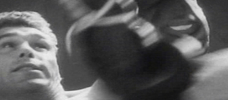
Stanley Kubrick’s Early Documentaries
1951-53 -
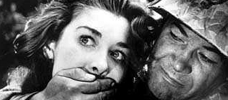
Fear and Desire
1953 -
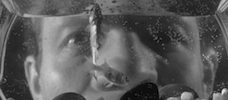
Killer’s Kiss
1955 -
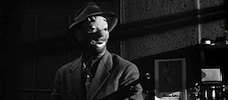
The Killing
1956 -
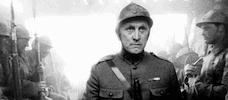
Paths of Glory
1957 -
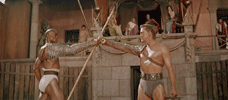
Spartacus
1960 -

Lolita
1962 -
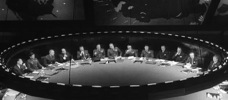
Dr. Strangelove or: How I Learned to Stop Worrying and Love the Bomb
1964 -

2001: A Space Odyssey
1968 -
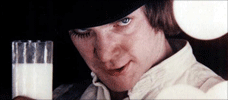
A Clockwork Orange
1971 -
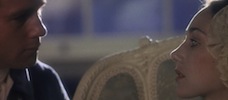
Barry Lyndon
1975 -
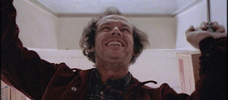
The Shining
1980 -

Full Metal Jacket
1987 -
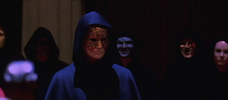
Eyes Wide Shut
1999 -

A.I.
2001
We don’t do comments anymore, but you may contact us here or find us on Twitter or Facebook.



